Enbylvania65000 - Enbylvania 6-5000
More Posts from Enbylvania65000 and Others
I never expected a webcomic artist who writes about peace and love for everyone and the importance of standing up for LGBT rights everywhere would link to a site that calls for the end of Israel's existence and a Jewish group that repeatedly uses undeniably antisemitic imagery in their attacks on Israel as well as homophobia.
So far unfollowed two people over the war in Israel and Palestine. Thought that after the last conflict I had already sorted out who not to follow. At least none of them are mutuals, but one of them is a conlanger and linguist I've admired for so many years whose insights on PIE reconstruction have been of great interest to me.

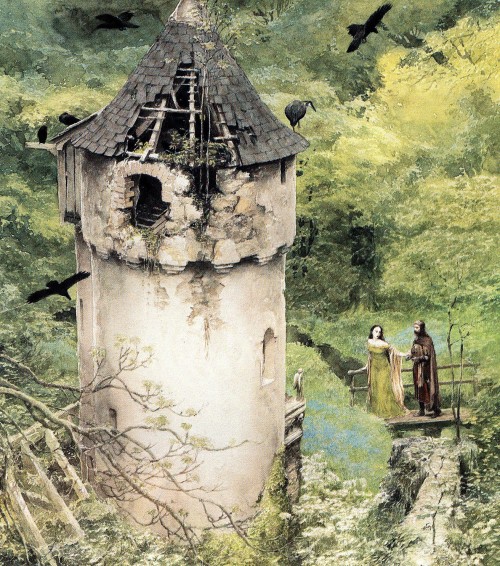
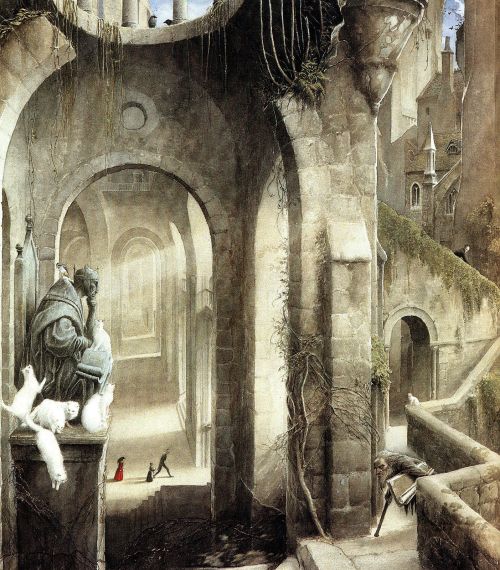



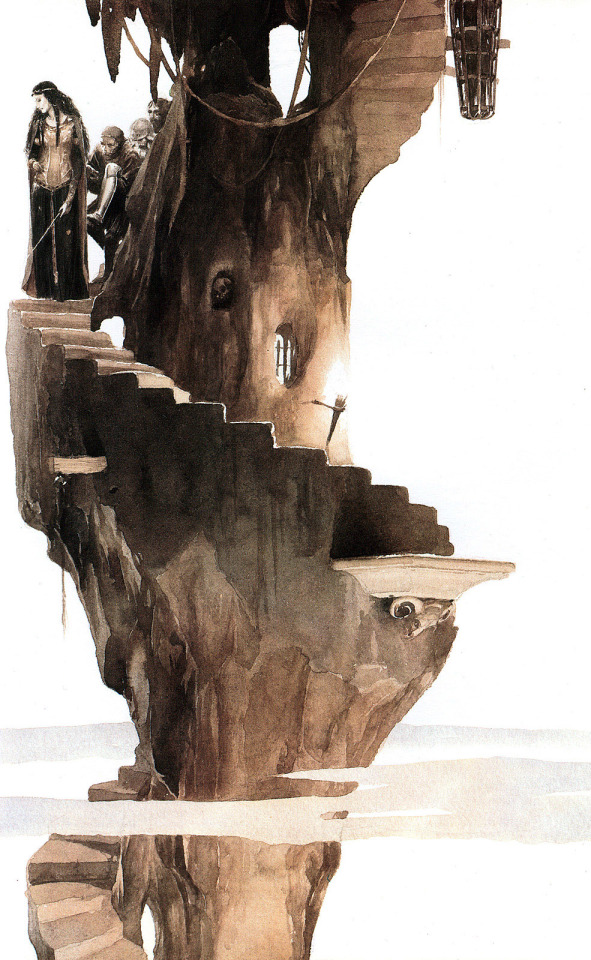
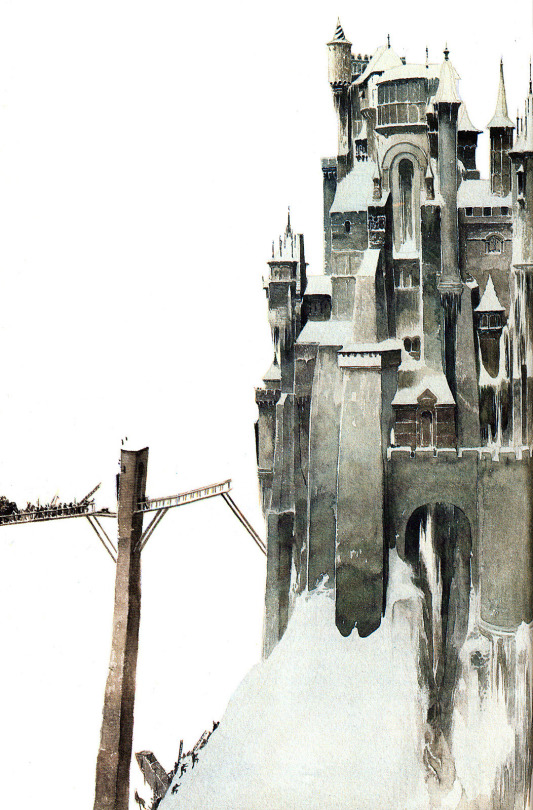
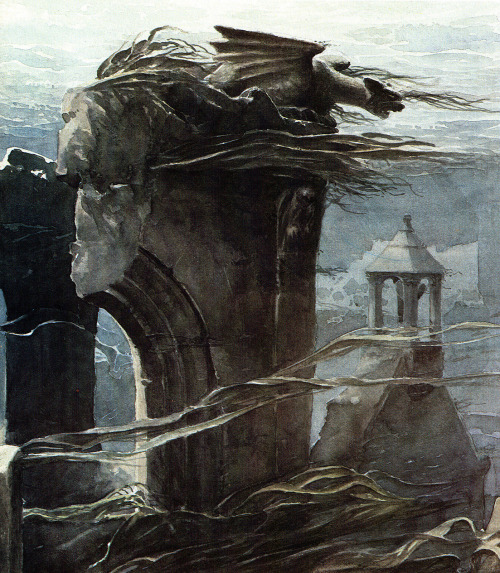
Castles - art by Alan Lee (1984)
I wish someday the concept of someone being out of someone else’s romantic league is looked upon as another folly of the past
Cockatoo socializing with veterinary staff.

The Early Therocene: 30 million years post-establishment

Tallest of All: The Girats
The great success of the boingos across the plains and grassland of the Early Therocene would spell bad news for the hamtelopes. While enjoying a brief success in the Middle Rodentocene, they would eventually be outcompeted by the boingos, with a more-efficient means of locomotion and more-specialized teeth for eating tough grasses. As such, the hamtelopes would be pressured into other niches as they were pushed out of the plains: many would become forest and jungle herbivores, others would remain as small hare-like grazers in the plains, and only on isolated environments do the hamtelopes get to dominate with the absence of competition.
But one family of hamtelopes stubbornly stuck to the plains, and despite the abundance of competing boingos grew to megafaunal sizes. However, they reached higher up, into the treetops where the boingos could not reach, and so were selected to grow taller still, and so this trend reaches its logical conclusion in the Early Therocene, with the tallest hamsters ever to walk the planet: the girats.
Towering high-browsers that feed on the sparse trees in the open plains, the girats reach tremendous heights of up to 16 feet, with their long legs and even longer necks. They evolved prehensile lips and long, flexible tongues to grasp and pluck branches and stems from trees, while their incisors served as pruning shears to clip off leaves to be swallowed. With virtually no competition for these high leaves the girats dominate and thrive, managing a coexistence with the other grazers that drove off most of their smaller relatives.
Girats are mostly solitary, though occasionally gather in groups to seek out mates during the breeding season. Male girats are easily distinguished from females by the presence of large, keratinous horns sported on their protruding cheekbones, which they use in headbutting contests with other males, swinging their heads at each other and trying to inflict bruising whacks onto their rivals with their blunt, hammer-like horns.
At least a dozen species of girat range all across Nodera and Easaterra, where they vary in color and the arrangement of their horns. The axehorn girat (Altocervimys securiceros) is the most common species in Nodera, while its relative the trihorn girat (Giraffacricetus triceros) lives further south in the savannah of Nodera. Meanwhile in the tropical forests of central Easaterra lives the splendid girat (Procerocricetus magnificens), one of several species in the genus Procerocricetus that adapted to denser jungles instead of the open plains. Unlike their cousin the axehorn girat, the trihorn and splendid species possess sharper horns, due to the need of extra defenses with the increased number of larger predators further south, and as such are less aggressive toward their own species than the axehorns: with more pointed weaponry, a headbutting contest between two rival males can easily result to death for them both, and such they rarely fight unless absolutely necessary.
▪▪▪▪▪▪▪▪▪

You’re welcome.
Lake Baikal is one of my top two nature tourism destinations, along with the Devil’s Throat in Yguasu /Iguazú/Iguaçu Falls.
Crystal clear ice of the frozen Baikal Lake
-
 herqueenstrawberry liked this · 3 weeks ago
herqueenstrawberry liked this · 3 weeks ago -
 niknoca liked this · 4 weeks ago
niknoca liked this · 4 weeks ago -
 ironandrue liked this · 4 weeks ago
ironandrue liked this · 4 weeks ago -
 pinkiestink liked this · 1 month ago
pinkiestink liked this · 1 month ago -
 nobleoxidation reblogged this · 1 month ago
nobleoxidation reblogged this · 1 month ago -
 herehaveafandom liked this · 1 month ago
herehaveafandom liked this · 1 month ago -
 milkygastrobones liked this · 1 month ago
milkygastrobones liked this · 1 month ago -
 thespacebeast liked this · 1 month ago
thespacebeast liked this · 1 month ago -
 vistawayjoker liked this · 1 month ago
vistawayjoker liked this · 1 month ago -
 unrelaxing reblogged this · 1 month ago
unrelaxing reblogged this · 1 month ago -
 sillymedoingsillythings reblogged this · 1 month ago
sillymedoingsillythings reblogged this · 1 month ago -
 satanic-duckling liked this · 1 month ago
satanic-duckling liked this · 1 month ago -
 smelly-welly69420 liked this · 1 month ago
smelly-welly69420 liked this · 1 month ago -
 toasterlock reblogged this · 1 month ago
toasterlock reblogged this · 1 month ago -
 toasterlock liked this · 1 month ago
toasterlock liked this · 1 month ago -
 proboscidea-althaeifolia reblogged this · 1 month ago
proboscidea-althaeifolia reblogged this · 1 month ago -
 spidernerd625 reblogged this · 1 month ago
spidernerd625 reblogged this · 1 month ago -
 bettywhitewig liked this · 1 month ago
bettywhitewig liked this · 1 month ago -
 soft-as-silk2 reblogged this · 1 month ago
soft-as-silk2 reblogged this · 1 month ago -
 hurluberlu31 liked this · 1 month ago
hurluberlu31 liked this · 1 month ago -
 alwayzatired liked this · 1 month ago
alwayzatired liked this · 1 month ago -
 alwayzatired reblogged this · 1 month ago
alwayzatired reblogged this · 1 month ago -
 importlvr23 liked this · 1 month ago
importlvr23 liked this · 1 month ago -
 bluemoon-and-stars liked this · 1 month ago
bluemoon-and-stars liked this · 1 month ago -
 soft-as-silk2 liked this · 2 months ago
soft-as-silk2 liked this · 2 months ago -
 cackling-concerto reblogged this · 2 months ago
cackling-concerto reblogged this · 2 months ago -
 borderlinecrazzy liked this · 2 months ago
borderlinecrazzy liked this · 2 months ago -
 alectheasshole liked this · 2 months ago
alectheasshole liked this · 2 months ago -
 twitches-z-pyro liked this · 2 months ago
twitches-z-pyro liked this · 2 months ago -
 midnightsnapdragon reblogged this · 2 months ago
midnightsnapdragon reblogged this · 2 months ago -
 foxirori reblogged this · 2 months ago
foxirori reblogged this · 2 months ago -
 remusquackinglupin liked this · 2 months ago
remusquackinglupin liked this · 2 months ago -
 wartygourd reblogged this · 2 months ago
wartygourd reblogged this · 2 months ago -
 thoughtsofagodlovingsunflower liked this · 2 months ago
thoughtsofagodlovingsunflower liked this · 2 months ago -
 thefuzzydude liked this · 2 months ago
thefuzzydude liked this · 2 months ago -
 fangirlintheroom reblogged this · 2 months ago
fangirlintheroom reblogged this · 2 months ago -
 allaneddem reblogged this · 2 months ago
allaneddem reblogged this · 2 months ago -
 boogie5000 liked this · 2 months ago
boogie5000 liked this · 2 months ago -
 ladybugmonkey13 liked this · 2 months ago
ladybugmonkey13 liked this · 2 months ago -
 lets-roar-babe liked this · 2 months ago
lets-roar-babe liked this · 2 months ago -
 themodethecitythesoul reblogged this · 2 months ago
themodethecitythesoul reblogged this · 2 months ago -
 abatonandouro reblogged this · 2 months ago
abatonandouro reblogged this · 2 months ago -
 superluri liked this · 2 months ago
superluri liked this · 2 months ago -
 cindersupportshumanrights liked this · 2 months ago
cindersupportshumanrights liked this · 2 months ago -
 missmoon123 reblogged this · 2 months ago
missmoon123 reblogged this · 2 months ago -
 idiot-with-a-sword reblogged this · 2 months ago
idiot-with-a-sword reblogged this · 2 months ago -
 idiot-with-a-sword liked this · 2 months ago
idiot-with-a-sword liked this · 2 months ago


